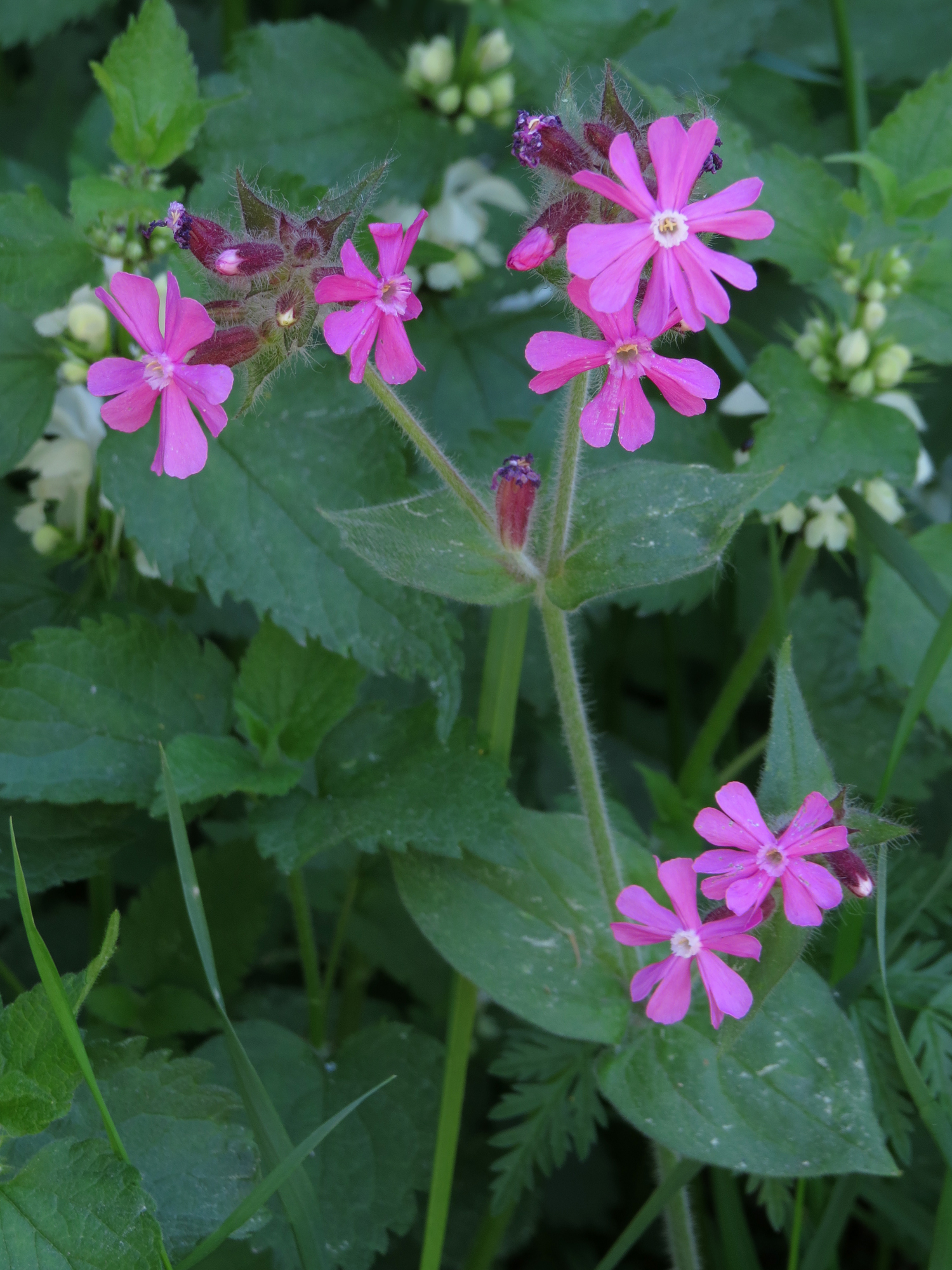Red catchfly
(Silene dioica dioica)

Description
Silene dioica dioica is a flowering plant species that belongs to the family Caryophyllaceae. Commonly known as red campion or red catchfly, this herbaceous perennial is native to Europe and Western Asia but has also been introduced to other parts of the world including North America, where it has become naturalized. In this article, we will explore the key characteristics, habitat, growing conditions, and uses of Silene dioica dioica, and provide insights into its role in horticulture and ecology. Description and Characteristics Silene dioica dioica is a clump-forming plant that can grow up to 60 centimeters (24 inches) in height. The plant features oval or lance-shaped leaves that are about 5 centimeters (2 inches) long and arranged opposite each other on the stems. The leaves are green and smooth, with a slightly waxy texture that provides some water resistance. The flowers of Silene dioica dioica are the main attraction of this plant. They bloom from May to August and are typically a bright pink or red color, although some varieties may be white. The flowers are produced in clusters at the top of the stem, and each flower has five petals that are deeply notched, giving the flower a frilly appearance. The petals surround a green calyx, which is also deeply notched and contains ten stamens with bright red anthers. Habitat and Growing Conditions Silene dioica dioica is a versatile plant that can grow in a range of habitats, from woodlands and meadows to hedgerows and road verges. It prefers moist, well-drained soil but can also tolerate drier conditions. The plant grows best in partial shade but can also thrive in full sun, as long as it receives adequate moisture. In terms of climate, Silene dioica dioica is adapted to temperate regions, and its natural range extends from Europe to Western Asia. In North America, it has become naturalized in some regions, particularly in the Northeast and Midwest. The plant is hardy and can withstand temperatures down to -15°C (5°F), making it suitable for a range of gardening zones. Cultivation and Uses Silene dioica dioica is an attractive plant that can be grown for its ornamental value. The flowers are particularly showy and can be used to add color to borders, rock gardens, and woodland gardens. The plant is also a good choice for attracting pollinators such as bees and butterflies. To cultivate Silene dioica dioica, start by preparing a bed with well-drained soil enriched with organic matter. Sow the seeds in early spring, either directly into the ground or in trays for transplanting later. Keep the soil moist but not waterlogged, and provide partial shade until the plants are established. Once the plants are established, they will require little care beyond regular watering during dry periods. In addition to its ornamental value, Silene dioica dioica has a number of medicinal and culinary uses. In traditional medicine, the plant has been used to treat a range of ailments, including digestive disorders and respiratory infections. The leaves can be eaten raw or cooked and have a slightly bitter taste that is similar to spinach. The flowers are also edible and can be used to garnish salads or other dishes. Ecological Role Silene dioica dioica plays an important ecological role in its native range, where it provides food and habitat for a range of animals. The flowers of Silene dioica dioica are particularly attractive to pollinators such as bees, butterflies, and moths, which feed on the nectar and pollen. The flowers are also visited by various species of flies, beetles, and ants. By attracting these pollinators, Silene dioica dioica plays a role in supporting the reproduction of other plant species in the ecosystem. In addition to providing food for pollinators, Silene dioica dioica also provides food for birds. The seeds of the plant are a valuable food source for finches, sparrows, and other seed-eating birds. By providing food for these animals, Silene dioica dioica helps to support the wider food web in the ecosystem. Silene dioica dioica also plays a role in stabilizing soil and preventing erosion. The plant has a fibrous root system that helps to hold soil in place, reducing the risk of soil erosion during heavy rainfall or wind. This is particularly important in areas where the plant grows on steep slopes or along riverbanks. Overall, Silene dioica dioica is an important plant species in its native range, providing food and habitat for a range of animals, supporting the reproduction of other plant species, and helping to prevent soil erosion.
Taxonomic tree:







